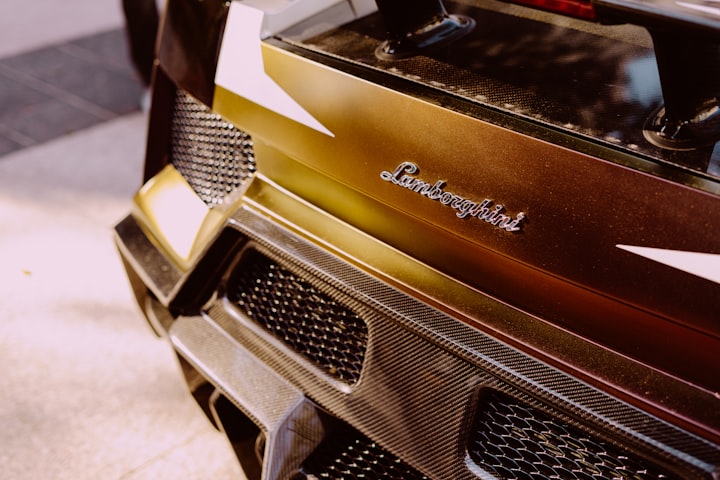Lamborghini is an Italian luxury sports car manufacturer that was founded in 1963 by Ferruccio Lamborghini. Before starting the company, Lamborghini was a successful tractor manufacturer, and he decided to enter the sports car market after being dissatisfied with the quality of his own Ferrari.
The company's first car, the Lamborghini 350 GT, was introduced in 1964 and was powered by a 3.5-liter V12 engine that produced 280 horsepower. The car was well-received and helped establish Lamborghini as a serious competitor to Ferrari.
Throughout the 1960s and 1970s, Lamborghini continued to produce a series of high-performance sports cars, including the Miura, Espada, and Countach. These cars were known for their sleek designs and powerful engines, and they helped cement Lamborghini's reputation as a maker of some of the world's most iconic supercars.
The company faced financial difficulties in the 1980s and was sold to a series of different owners. During this time, Lamborghini produced a number of less successful models, including the Jalpa and the LM002 SUV.
In 1998, Lamborghini was purchased by the Volkswagen Group and became part of the company's Audi division. Under Volkswagen's ownership, Lamborghini has continued to produce a range of high-performance sports cars, including the Murciélago, Gallardo, and Aventador.
Today, Lamborghini remains one of the world's most iconic luxury sports car brands, known for its powerful engines, cutting-edge technology, and distinctive styling. The company continues to push the boundaries of automotive engineering and design, producing some of the most sought-after supercars in the world.
Certainly! Here is some additional information about Lamborghini's history and notable models:
In the 1980s, Lamborghini faced financial difficulties and went through a series of ownership changes. In 1987, Lamborghini was sold to the Chrysler Corporation, which invested heavily in the company and helped it develop new models, including the Diablo, which was introduced in 1990. The Diablo was powered by a 5.7-liter V12 engine that produced up to 485 horsepower, and it was known for its aggressive styling and blistering performance.
In 1998, Lamborghini was purchased by the Volkswagen Group, which helped the company return to profitability and invest in new models. Under Volkswagen's ownership, Lamborghini introduced the Murciélago in 2001, which was powered by a 6.2-liter V12 engine that produced up to 640 horsepower. The Murciélago was known for its striking styling and impressive performance, and it was produced in several different variants over the years.
In 2003, Lamborghini introduced the Gallardo, which was smaller and more affordable than the Murciélago. The Gallardo was powered by a 5.0-liter V10 engine that produced up to 552 horsepower, and it was known for its agile handling and impressive acceleration.
In 2011, Lamborghini introduced the Aventador, which was powered by a 6.5-liter V12 engine that produced up to 700 horsepower. The Aventador was known for its dramatic styling and blistering performance, and it was produced in several different variants over the years.
In recent years, Lamborghini has continued to push the boundaries of automotive engineering and design. The company has introduced several new models, including the Huracán, which was introduced in 2014 and is powered by a 5.2-liter V10 engine that produces up to 610 horsepower. Lamborghini has also experimented with hybrid and electric technologies, producing several concept cars that showcase the company's commitment to innovation and sustainability.
Sure! Here are some additional details about Lamborghini's recent models and innovations:
In 2019, Lamborghini introduced the Aventador SVJ, which was powered by a 6.5-liter V12 engine that produced up to 759 horsepower. The SVJ was designed to be the fastest production car in the world, and it set a new lap record at the Nürburgring Nordschleife, one of the most challenging race tracks in the world.
Lamborghini has also been experimenting with hybrid and electric technologies in recent years. In 2014, the company introduced the Asterion LPI 910-4, a hybrid concept car that was powered by a 5.2-liter V10 engine and three electric motors. The Asterion had a total output of 910 horsepower and could reach a top speed of 199 miles per hour.
In 2019, Lamborghini introduced the Sián, a hybrid supercar that was powered by a 6.5-liter V12 engine and a 34-horsepower electric motor. The Sián had a total output of 819 horsepower and was the most powerful Lamborghini ever produced at the time of its launch.
Lamborghini has also been working on electric technologies, and in 2017, the company unveiled the Terzo Millennio concept car, which was designed to showcase the future of electric supercars. The Terzo Millennio is powered by four electric motors, one for each wheel, and features an advanced energy storage system that uses supercapacitors instead of traditional batteries.
Lamborghini has also been working on new materials and manufacturing technologies. In 2019, the company unveiled the Sian FKP 37, a limited-edition hybrid supercar that features a carbon fiber monocoque chassis and 3D-printed air vents. The Sian was also the first Lamborghini to use a patented material called Forged Composites, which is lighter and stronger than traditional carbon fiber.
Overall, Lamborghini continues to push the boundaries of automotive engineering and design, producing some of the world's most iconic and sought-after supercars. The company's commitment to innovation, performance, and design ensures that it will remain a leader in the luxury sports car market for years to come.
About the Creator
Car Community
high quality car stories , everything you should know about every car ever made.







Comments
There are no comments for this story
Be the first to respond and start the conversation.